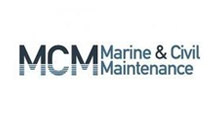
Apartment Case
(Each case study is based on actual project casefiles, digested to provide clear examples of diagnostic and repair techniques typical of each class of structure.)
In 1993, a survey of a 10-storey apartment building revealed extensive chloride contamination of the concrete and rebar corrosion, and a conventional break-out and replace method was advised in the spring of 1995.
However, after removing the paint by light grit-blasting, it became apparent that far more extensive rebar corrosion had occurred, indicating that five or six times the original amount of concrete would need to be replaced.

Constructed in 1958, the building had undergone conventional concrete repairs in 1970 and the mid-1980s. It now became evident that the repairs completed in the 1980s had not succeeded for two reasons:
- There had been a failure to determine the extent of the areas requiring repair.
- This was compounded by an incomplete understanding of the mechanisms of concrete deterioration.
In the light of the more extensive corrosion problem discovered, the repair strategy had to be re-examined.
The break-out and replace method became significantly more expensive due to the larger volume of concrete in need of replacement and because of external support needed during the repair in order to ensure structural stability and safety.
Since the cover zone was chloride-contaminated, resulting in a general rebar corrosion problem, it became evident that chloride extraction would provide a more appropriate repair, both from a technical and an economical point of view.
Chloride extraction is an electrochemical treatment that easily provides repair of a structure as a whole. This means extraction of all chloride ions to a level below 0.05% of the cement weight in the concrete.
Simultaneously the alkalinity of the concrete surrounding the reinforcement is raised due to electrolysis at the rebar surface (or cathode), thereby the danger of leaving corroding areas undetected and un-repaired is avoided. This is of utmost importance to ensure a long-lasting repair.
Since chloride extraction is an electrochemical method, rebar continuity is vital. The continuity was poor due to inappropriate placement and tying of the rebars. This had to be improved by making a number of electrical connections to the rebars.
The repair procedure can be summarised as follows:
- All cracked and spalled concrete was patch repaired and full rebar continuity was established
- The chloride extraction anode system was installed. The anode system consisted of a steel mesh embedded in a weak electrolyte reservoir of a sodium borate buffer solution in potable water temporarily applied on the concrete surface. The mesh was fixed to the vertical faces using plastic plugs and plastic spacers. On the balcony soffits, the mesh was fixed to wooden battens fastened to the concrete.
- When the mesh was in place, specially formulated cellulose fibre was sprayed directly onto the concrete surface together with the weak electrolyte solution of sodium borate. The cellulose fibre acts as a reservoir for the electrolyte, which is a buffer solution. The anode system was applied to all types of concrete surfaces — horizontal, inclined or vertical, regardless of shape, profile, surface condition or architectural detail.
- Individual treatment sections of up to 500 m² were installed, with each section taking three to four days using a three-man team.
- Leads to the rebars were connected to the negative pole of an AC/DC rectifier; leads to the anode meshes were connected to the positive pole.
- A voltage was applied and adjusted to give a current flow equivalent to approximately 1 A/m² of concrete surface. The rectifier automatically adjusted the voltage to maintain the required current output.
- Concrete cores were obtained and examined after 37 and 52 days according to a predetermined laboratory procedure to determine when the extraction process was complete.
- Voltage and current flow were checked once or twice a day and fresh electrolyte sprayed onto the fibre reservoir when necessary.
- Once the treatment was completed, the rectifier was switched off, cables dismantled and the anode system removed.
- The concrete surfaces were washed with high pressure warm water and left to dry before the application of a protective coating that was impermeable to both chloride ions and carbon dioxide while still being permeable to water vapour.




















